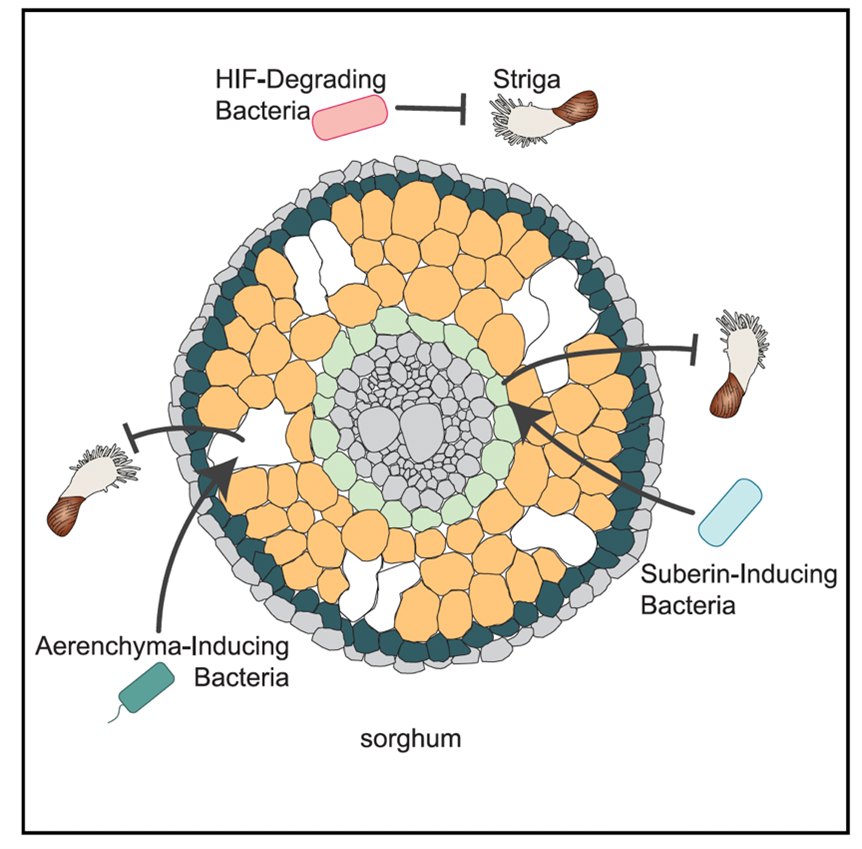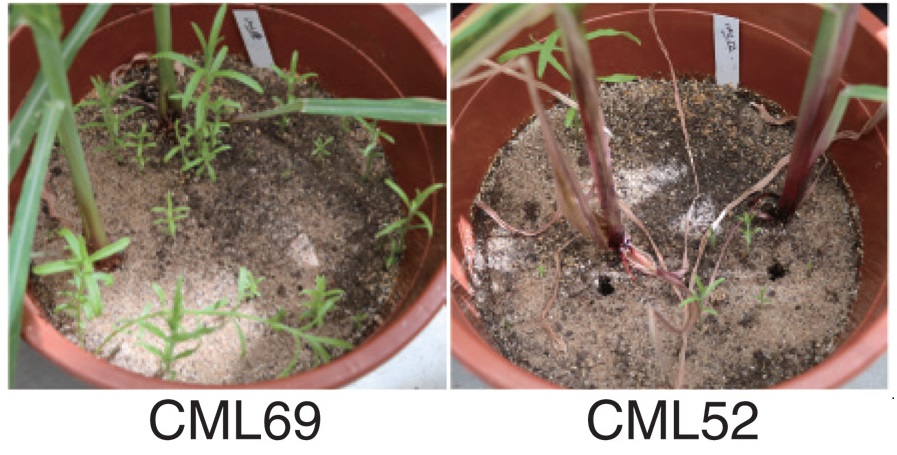
Harnessing the potential of soil microbial allies to combat Striga infection in sorghum roots
Plant Science Research WeeklyMicrobial neighbors of plants in the soil comprise of a vast array of bacteria and fungi, collectively known as the microbiome. This soil microbial community forms close associations with plants and regulates plant growth and development by inducing changes in the plant and soil metabolites. In this…

Many modes of Striga resistance in sorghum
Plant Science Research WeeklyWitchweeds (Striga spp.) are parasitic plants. Like other weeds, they compete with food crops, but they do so very efficiently by penetrating host tissues and forming vascular connections. Through this effective extraction of nutrients and photosynthate from their hosts, Striga can literally wipe out…

Weeding the witchweed by changing strigolactone biosynthesis in maize
Plant Science Research WeeklyStriga, commonly known as witchweed, compromises the yield of maize (Zea mays) especially in Africa. The seeds of Striga species remain dormant in the soil and are stimulated to germinate by a class of hormones called strigolactones (SL) exuded by the maize roots. Strigolactones are plant hormones with…

